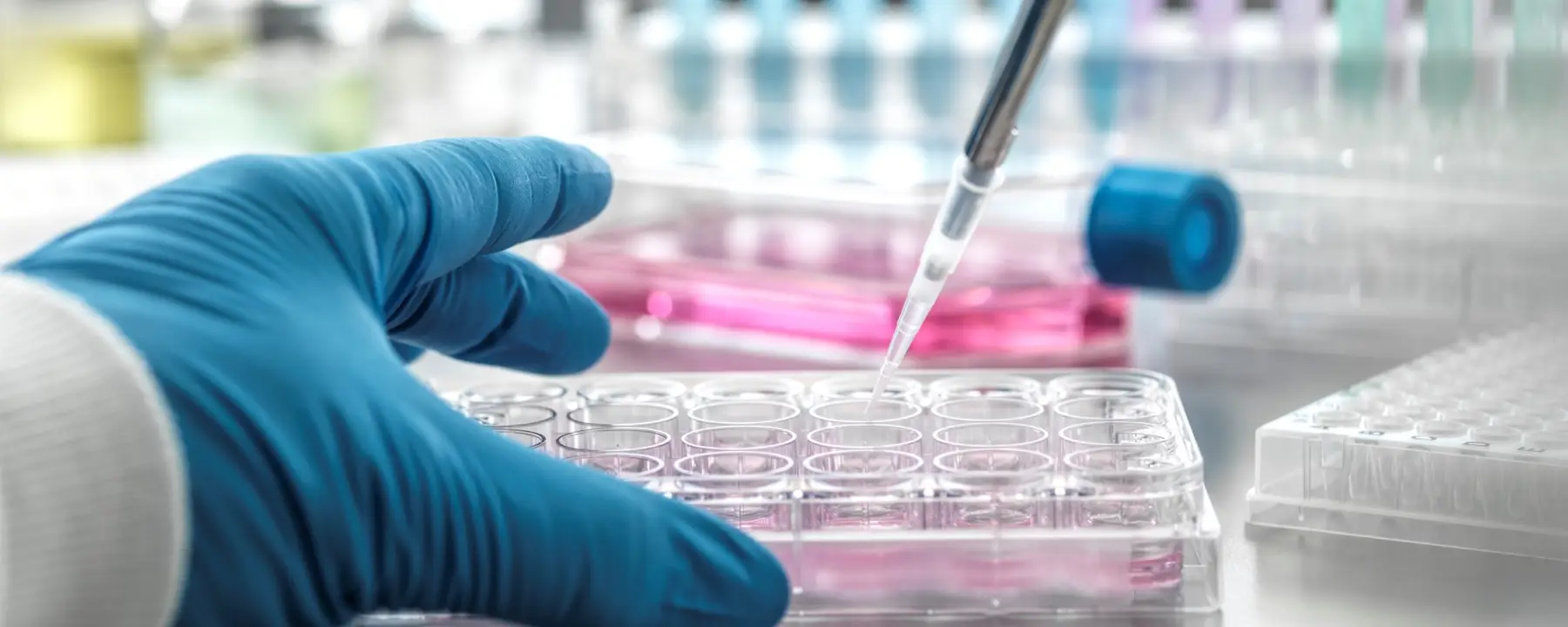Targeting the brain’s reward system to safely and effectively reduce alcohol drinking and dependence.
Objective
To create new molecules that target specific protein receptors in the brain involved in the rewarding and/or reinforcing effects of alcohol, which can be used to develop medications to treat alcohol use disorder (AUD).
Approach
Two teams at RTI are developing new molecules targeting protein receptors to change how these proteins respond to the presence of alcohol. One team developed several negative allosteric modulators (NAMs) that bind to an alternate site on the CB1 receptor. Another team developed agonists that bind directly to the GPR88 receptor.
Impact
Both teams have produced early molecules with promising drug-like properties and saw promising results in vivo, including reduced alcohol seeking and drinking behaviors. The teams are working to further refine these molecules to eventually be used in medications to treat AUD and other substance disorders, expanding treatment options and opening up more accessible avenues to AUD treatment.
What is Alcohol Use Disorder?
Alcohol use disorder (AUD) is a significant public health issue affecting nearly half a billion people globally. In the U.S., approximately 178,000 people per year die from frequent or excessive drinking, equaling about 488 deaths each day. Excessive alcohol intake can cause liver disease, cardiovascular diseases, certain cancers, and more, as well as acute injuries that result in death—in 2022, 32% of driving deaths in the U.S. were due to alcohol impairment.
While behavioral rehabilitation programs may be successful for some, they often require significant financial, emotional, and time investments, making it difficult to access treatment. Medications that treat the biological underpinnings of this disorder may be more widely accessible and would enable more targeted and efficient treatment that is not as disruptive to daily life.
RTI's Research to Develop More Effective Medications for Alcohol Use Disorder
So far, three medications have been approved by the U.S. Food and Drug Administration to treat AUD: naltrexone, acamprosate, and disulfiram. However, they have only modest efficacy and can cause serious psychiatric side effects. At RTI, two research teams with expertise in drug discovery and medicinal chemistry have received funding from the National Institute of Alcohol Abuse and Alcoholism (NIAAA) to develop and refine new molecules that target protein receptors associated with the brain’s reward systems. Eventually, these molecules may be used in medications that reduce alcohol drinking and dependence in people with AUD.
Targeting the CB1 Receptor
One team focuses on the CB1 receptor (CB1R)—one of the main receptors involved in the brain’s reward system and associated with developing addictions to multiple drugs, including cocaine and alcohol. CB1R activation is observed upon body’s exposure to these drugs and the subsequent biological responses and behaviors, such as consumption, tolerance, and dependence. However, medications that block CB1R to prevent its activation have serious psychiatric side effects and are no longer in development after one such drug (Rimonabant) being withdrawn from European markets.
Despite this setback, CB1R remains a promising target to treat AUD. The group pivoted to a different, less conventional approach: creating molecules that bind to an alternate site on the receptor and reduce its activity without directly blocking it. The team has developed several such molecules (e.g., RTICBM-74), known as negative allosteric modulators (NAMs), that reduce CB1R-associated cocaine- and alcohol-seeking behavior in vivo without anxiety-like behaviors commonly associated with CB1R blockers. Their current work aims to further refine these molecules and investigate how these CB1R NAMs affect alcohol intake, relapse, and other reward-related behaviors to develop safe, targeted treatments.
Targeting the GPR88 Receptor
Another team focuses on a receptor found in reward-related areas of the brain: GPR88. This team aims to influence how receptors respond to the presence of alcohol by developing a new type of molecules, known as GPR88 agonists, that bind to the GPR88 receptor and attenuate alcohol’s rewarding effects. The first such molecule, named RTI-13951-33, is able to specifically activate GPR88 in vitro and in vivo.
This group has shown that RTI-13951-33 can significantly reduce alcohol drinking and seeking behaviors in vivo without significantly affecting other behaviors, providing support for GPR88’s role in directly and specifically attenuating alcohol consumption. The team recently developed a longer-acting version of the molecule, RTI-122, and is working to refine it and identify even more potent and selective versions that could be formulated into medications to treat AUD.
Advancing the Potential of Diverse Medications for Alcohol Use Disorder
Developing effective medications is critical to improve outcomes for those with AUD and their families. Our experts in medicinal chemistry and drug discovery are making major advances in these efforts, paving the way for more effective treatments.
- National Institute on Alcohol Abuse and Alcoholism (NIAAA)



